-
Japan begins road to recovery
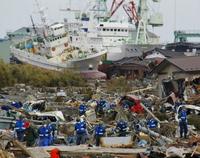
Japan’s long road to recovery has already begun; it is estimated that more than 135,000 buildings were destroyed and the Japanese government estimates that the recovery will cost as much as $310 billion; in the Miyagi prefecture, 80 miles from the quake’s epicenter, construction will soon begin on 1,110 temporary homes to shelter the more than 243,000 people who are now homeless; authorities are struggling to provide those living in shelters with enough food, clothing, and sanitary supplies; experts believe that Japan can rebuild quickly; Miyagi plans on building 10,000 temporary homes
-
-
Nuclear power here to stay
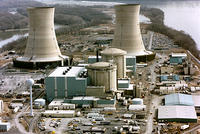
There are currently 441 large nuclear power reactors in 35 countries, 120 of which date from the 1970s and early 1980s; collectively the 400-odd reactors supply about 15 percent of the world’s electricity (the average in OECD countries being more than 22 percent); the United States has the greatest number operating, with 104 units providing 20 percent of its electricity supply; this is followed by France with 57 (producing nearly 80 percent of its supply), and Japan, with 54 (providing about 30 percent); so far, the world’s 441 reactors have racked up more than 14,000 reactor-years of operation; to generate electricity for a city of a million people, coal-fired power stations have to burn about three million tons of coals a year, releasing about ten million tons of carbon dioxide to the atmosphere in the process; to generate the same power, nuclear reactors consume only one ton of the fissile uranium isotope, U-235 — and release no carbon dioxide
-
-
Japan's disaster draws attention to little-known U.S. nuclear insurance plan
A little-known insurance pool in the United States that would provide insurance coverage for victims of nuclear reactor accidents occurring in the United States; the pool has been around for decades; Created under the Price-Anderson Nuclear Industries Indemnity Act of 1957 (Price-Anderson), the pool provides general liability insurance
-
-
Biosensor improves pathogen detection in food, water
A nanotechnology-based biosensor being developed by Kansas State University researchers may allow early detection of both cancer cells and pathogens, leading to increased food safety and reduced health risks
-
-
"Solarball" promises to deliver clean water to developing countries

Contaminated drinking water is the world’s leading killer with more than 3.4 million people a year, including two million children, dying from water borne diseases; to help combat these preventable deaths, one Australian university student has designed an affordable solution to provide clean drinking water to people across the world; the device, called the Solarball, can provide up to three liters of clean water a day by harnessing the energy from the sun; the Solarball can be manufactured cheaply, is simple to use, and made of durable materials; it was designed specifically for use by people in hot, wet, tropical climates
-
-
Fifteen U.S. nuclear reactors are located in an active seismic zone
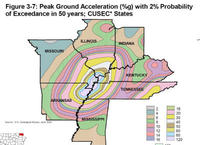
There are 104 nuclear plants in the United States, and fifteen of them are located in what is known as the New Madrid Seismic Zone, a region defined by a fault line of the same name; the New Madrid Seismic Zone involves eight states, and it is an active earthquake area in the central United States that follows the Mississippi River between Missouri, Kentucky, Arkansas, and Tennessee; while the U.S. earthquake zone is active, scientists say the ingredients do not exist there for a Japan-style nuclear disaster; should a large seismic event strike this part of the country, seismologists offer Christchurch, New Zealand, rather than Japan as an example of what to expect. In February, Christchurch suffered a 6.3 magnitude quake and billions of dollars in losses
-
-
Detecting critical flaws in railroad lines
Rails are the only thing keeping trains weighing thousands of tons travelling anywhere from 70 to 160 miles per hour grounded, thus any flaws or imperfections in these rails could result in accidents or major delays; railroads transport more than 25 percent of the goods in the United States including critical resources like coal, lumber, chemicals, and grain; one firm has developed the technology to detect flaws in rails that could cause major disruptions or delays; most flaws occur inside the rail and cannot be seen with the naked eye
-
-
Germany's drive to end nuclear power serves as model for others
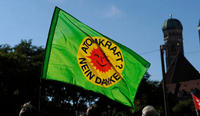
Germany’s ambitious plan to wean itself from nuclear power and transition to renewable energy can serve as a valuable model for other countries seeking to do the same; nuclear power provides Germany with 23 percent of its energy; seven of its seventeen nuclear reactors will be taken offline; experts warn that the shutdowns could cause instability in the power grid and even blackouts; economists also say that the transition will be costly and result in higher energy prices for consumers; the government remains optimistic; renewable energy provides 17 percent of Germany’s energy needs and the Environment Ministry says that in ten years renewable energy will constitute 40 percent of all production
-
-
Zion's nuclear dry-cask storage solution
In Illinois, 28,588 fuel assemblies, each containing a bundle of 200 rods and weighing about 600 pounds, are cooling in pools on the ground or above reactors — as in Japan; experts say they are “very inviting targets for terrorists”; moreover, “No one has come up with a solution to safely store this waste for 10,000 years into the future”
-
-
U.S. industrial processes vulnerable to Stuxnet-like attack
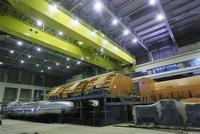
Cyber security experts recently warned that U.S. manufacturing plants and critical infrastructure were vulnerable to a Stuxnet-like attack; industrial plants, transportation systems, electrical grids, and even nuclear plants could be crippled by new cyber weapons that target specialized control core processes; concern has spread after the Stuxnet virus targeted these systems and created physical damage; experts have likened Stuxnet to “the arrival of an F-35 into a World War I battlefield”
-
-
NRC: Not all equipment failures at U.S. nuclear plants are reported
Companies that operate U.S. nuclear power plants are not reporting some equipment defects that could create safety risks, according to a new report; the Nuclear Regulatory Commission’s (NRC) inspectors found at least twenty-four instances where possible equipment defects were identified but not reported to the agency from December 2009 through September 2010; the NRC inspector general also raised questions in the report about the agency’s oversight, saying reporting guidelines for the nuclear industry are “contradictory and unclear”; unless the NRC takes steps to improve its reporting guidelines, “the margin of safety for operating reactors could be reduced” the report said
-
-
Nuclear countries glean lessons from Japan's disaster
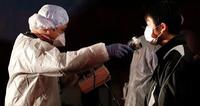
Japan’s effort to contain the escalating nuclear disaster reveals a series of missteps, bad luck, and desperate improvisation; what also emerges is a country that has begun to question some of its oldest values: Japanese have long revered the country’s bureaucratic competence, especially when it is contrasted with its political dysfunction; Japan has also proudly often chosen to go its own way and turn down outside assistance; other countries relying on nuclear power generation are trying to see whether the Japanese disaster holds lessons for them
-
-
Indian Point 50-mile evacuation plan unrealistic
Located only thirty-five miles north of New York City, the most populous area in the United States, is the Indian Point nuclear reactor; safety officials are questioning the wisdom of operating a plant so close to New York City; a fifty mile evacuation radius around the plant would affect nearly twenty million people and some say evacuating that many people on short notice is a “fantasy”; NRC is currently conducting a thorough safety review of U.S. nuclear plants and the Indian Point reactor is one of seventeen under scrutiny; New York Governor Andrew Cuomo recently called for the plant to be shut down
-
-
Businesses cannot defend against cyber attacks, expert says
In a recent testimony before Congress, a cyber security expert warned that the private sector in the United States has proven unable to defend the nation’s critical cyber infrastructure from attack; businesses own 85 percent of critical infrastructure and they have not invested in the skills or technology to secure it from cyber attack leaving the electrical grid, financial services, and other key elements vulnerable; foreign intelligence agencies, organized gangs, and corporate spies have successfully infiltrated banks, multinational corporations, and even government websites and stolen sensitive data; cyber security experts urged for greater government regulation to secure U.S. networks
-
-
Alstom acquires CA company, seeks to enter U.S. smart grid market
French electrical grid manufacturer Alstom recently acquired Utility Integration Solutions, Inc. (UISOL) in its efforts to expand its smart grid control room capabilities and enter the U.S. market; UISOL specializes in demand response management systems, which are critical to the operation of smart grids; analysts believe that this could put Alstom in position to become an integrated systems provider for smart grids in the United States on par with ABB, Siemens, and General Electric
-
More headlines
The long view
Virtual Models Paving the Way for Advanced Nuclear Reactors
Computer models predict how reactors will behave, helping operators make decisions in real time. The digital twin technology using graph-neural networks may boost nuclear reactor efficiency and reliability.
